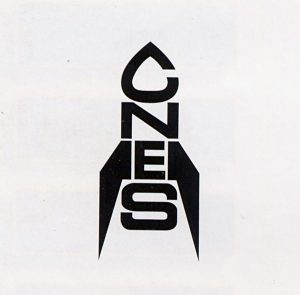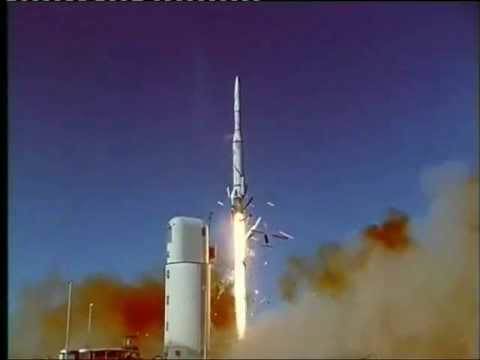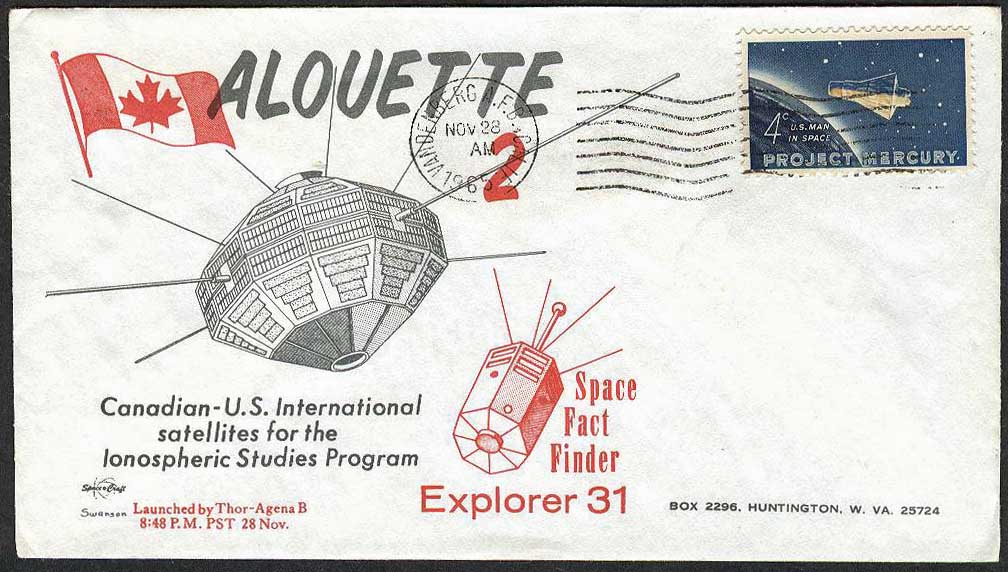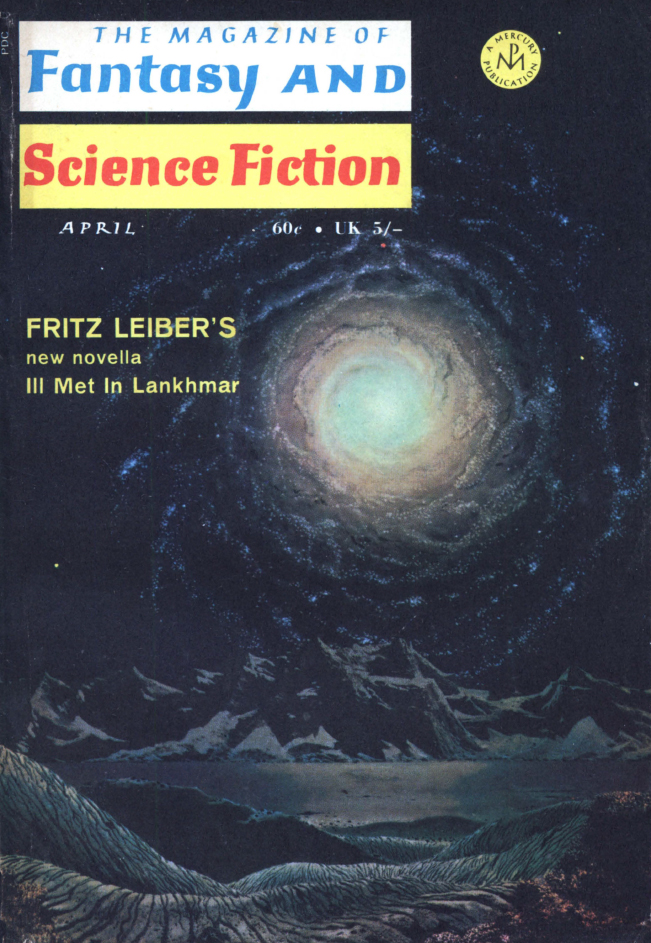
by Kaye Dee
A few weeks ago, I wrote that November had been a busy month for space missions, but just in the past three weeks the heavens have become even more crowded, with six more launches taking place
France Joins the Space Club-Twice!
Congratulations to France on orbiting its first two satellites within ten days of each other, joining that exclusive club of nations that have either launched their own satellite, or put a satellite into orbit with the help of the United States. In France’s case it has done both!

In addition to its participation in the European Launcher Development Organisation (ELDO), France has its own national space programme, managed by its space agency, the Centre National d'Etudes Spatiales (National Centre for Space Studies, or CNES for short). Established just on four years ago (19 December 1961), CNES has moved rapidly to make France a leading player in the Space Race: it has been working with the French Army on the development of a satellite carrier rocket, named Diamant, and with the United States on a series of satellites dubbed “FR” (for France, of course).
France’s first satellite, A-1, was launched on 26 November on the first flight of the Diamant (Diamond) launcher from the French ballistic missile test site at Hammaguir, in Algeria. With this launch, France has become the sixth country to have a satellite in orbit—and only the third nation after the USSR and United States to launch a satellite on its own launch vehicle (Canada, the UK and Italy all launched their satellites on American rockets).

France's Diamant rocket lifts off successfully on its maiden flight, carrying the A-1 satellite
The 60ft tall Diamant is derived from France’s “Precious Stones” nuclear ballistic missile development programme. It is a three-stage rocket, with the first stage being liquid-fuelled and the two upper stages derived from solid-fuel missiles. The satellite is officially named A-1 (Armée-1/Army-1) as it is the first satellite launched by the French Army, but the French media quickly nicknamed it Asterix, after a popular character in French comic strips. This character isn’t well-known in the English-speaking world, but apparently “Asterix the Gaul” is hugely popular in France. According to some of the ELDO people at Woomera, the A-1 satellite was originally intended to be the second satellite in the FR series. It was hurriedly selected to fly on the first Diamant test launch, because FR-1 was in the final stages of being readied for launch in the United States (more on that below).

A-1 being readied for launch, mounted on top of the Diamant's third stage
A-1/Asterix is shaped a bit like a spinning-top and, rather unusually, its body is made of fibreglass, which is decorated with black stripes for passive thermal control, to stop the satellite’s interior overheating. A-1 is 22 inches in diameter and 22 inches high, with four antennae around its midriff. It weighs 92 ½lbs and carries instruments for taking measurements of the ionosphere. Battery powered, A-1 was expected to transmit for about 10 days, but although the launch was successful, the signals from the satellite quickly faded, possibly due to damage to its antennae caused by part of the protective nosecone hitting the satellite as it fell away. However, even though it is no longer transmitting, A-1 will remain in orbit for several centuries!

On 30 November, the French Post Office celebrated the successful launch of France's first satellite with the release of a stamp triptych
France’s second satellite, FR-1, was launched on 6 December local time using a Scout X-4 vehicle from the Vandenberg Air Force Base in California. Originally intended to be the first French satellite, FR-1 is the first of a series of French scientific satellites that have been developed by CNES in conjunction with the Centre National d'Etudes des Telecommunications (National Centre for Telecommunications Studies, or CNET). This project is partially funded by NASA’s Office of Space Science Applications as part of a co-operative programme that commenced in 1959, when the United States offered to launch satellites for any nation that wished to take part. Canada, Britain and Italy have all launched their first satellites under this programme (which is why they were launched on US rockets). Australia has been invited to participate but, so far, our government has rejected proposals from the scientific community on the basis that it cannot afford to fund the development of a satellite.

FR-1, the second French satellite mounted on its Scout launch vehicle, before the rocket is moved to the pad
The FR-1 satellite (France-1, also known as FR-1A) carries experiments to study VLF propagation in the magnetosphere and irregularities in the topside ionosphere. It also has an electron density probe to measure electron concentration in the vicinity of the satellite. Weighing 135lb, FR-1 looks like two truncated octagonal pyramids joined at their bases by an octagonal prism measuring 27 inches across from corner to corner. The body is covered with solar cells and bristles with antennae and probe booms. FR-1 is operating smoothly so far, but it carries no onboard tape recorder, so the satellite’s data has to be transmitted in real time when it passes over designated ground stations.
So why the rush to get the Asterix out before FR-1? The launch of Asterix seems to have been a combination of expediency and French nationalism. CNES and the Army were ready to do the first test launch of the Diamant rocket, and these sort of first tests are usually just done with a ballast payload, so that if the rocket fails nothing important is lost. In this case, CNES seems to have thought that they might as well take the risk of putting a satellite on the rocket, because if it succeeded it would give France the honour of being the third nation to launch its own satellite. As FR-1 was already at Vandenberg being prepped for launch, it was easier to pull out FR-2, which was a smaller satellite and already pretty well completed development, to become the payload for the Diamant flight. If the Diamant launch was then delayed for some reason, or failed, France would still become one of the earliest nations with a satellite in orbit with the launch of FR-1. So, as we say in Australia, they "had a bob both ways" on gaining some space kudos!
ISIS-X: International Cooperation Exploring the Ionosphere
NASA must now have a virtual production line, churning out Explorer satellites like sausages for launch about two weeks apart, if the past month has been anything to go by: there was Explorer-29 on 6 November, Explorer-30 on 19 November and now Explorer-31 on 29 November. This latest Explorer is also known as Direct Measurement Explorer-A (DME-A) and it represents the American half of a joint ionospheric research program with Canada, which is collectively known as International Satellites for Ionospheric Studies-X (ISIS-X).

Explorer-31 ready for shipment to Vandenberg Air Force Base
Explorer-31 weighs about 218lb and carries seven experiments that can be operated simultaneously or sequentially, taking direct measurements immediately in front of, and behind, the satellite's path. Solar cells that cover about 15 percent of the satellite’s surface provide its power. Like FR-1, this small spacecraft does not carry an onboard tape recorder, so its data has to be transmitted ‘live’ when it is turned on while passing over one of NASA’s Space Tracking and Data Acquisition Network (STADAN) ground stations.
Explorer-31 was launched from Vandenberg Air Force Base by a Thor Agena-B rocket, riding piggy-back with its Canadian ISIS-X counterpart, Alouette-2. This satellite has been developed by the Canadian Defence Research Board-Defence Research Telecommunications Establishment, as part of the same programme under which Canada’s first satellite, Alouette-1 was launched back in September 1962. This second Alouette has been developed from the original Alouette-1 back-up satellite, although it has more experiments and is a more sophisticated satellite than its predecessor. The name “Alouette” (skylark) comes from that popular French-Canadian folk song that I think everyone knows, even if they have never learned French.

Photos of Alouette-2 and Explorer-31 are hard to find, but they are reasonably well depicted on this souvenir cover marking their joint launch. It's lucky my Uncle Ernie goes to so much effort to build his space philately collection
At 323lb, Alouette is much larger than Explorer-31, but the two satellites have been placed in near identical orbits so that their data can complement each other. Alouette-2 is designed to explore the ionosphere using the technique of ‘topside sounding’, which determines ion concentration within the ionosphere by taking measurements from above the ionosphere. Alouette-1 was also a topside sounder. The satellite is carrying five instruments, three of which utilise two very long dipole antennae (one is 240ft, the other 75ft long). Alouette 2 also has no onboard data recorder and downloads its data when passing over stations in NASA’s STADAN network.
Luna-8-Fourth Time Unlucky!
Despite its early lunar exploration triumphs with Luna-1, 2 and 3 (which we in the West nicknamed “Lunik”, to match with Sputnik), the USSR has not had much success since with its Moon program. USSR’s Luna-8 probe, launched on 3 December, was the Soviet Union’s fourth attempt to soft-land a spacecraft on the lunar surface this year. Being able to land safely on the Moon is a technique that both the United States and the Soviet Union need to master in order to successfully accomplish a manned lunar landing later this decade. Two of this year’s attempts, Luna-5 and Luna-7, crashed while attempting to land. Luna 6 went off course and missed the Moon, flying by at 99,000 miles.
Luna-8, intended to land in the Oceanus Procellarum (Ocean of Storms), also failed in its mission yesterday. According to TASS, the “probe’s soft-landing system worked normally through all stages except the final touch-down”. It looks like Luna-8 has followed Luna-7 in crashing on the Moon. Let’s see if Russia has better luck with Luna 9!
Gemini 7-Settling in for a Long Haul
Just a day after Luna-8, the latest mission in NASA’s Gemini program, Gemini-7 was launched on what is planned to be a two-week endurance mission, that will include a rendezvous with the Gemini-6 spacecraft. I’m not going to write about this mission, as one of my colleagues here will do that later this month, but I couldn’t sign off on this article without mentioning the latest addition to the impressive list of spacecraft launched in the past few weeks. The Space Race is really speeding up!





![[March 20, 1970] Here comes the sun (April 1970 <i>Fantasy and Science Fiction</i>)](https://galacticjourney.org/wp-content/uploads/2025/03/700320fsfcover-651x372.jpg)
![[December 8, 1965] Space is Getting Crowded (A-1/Asterix, FR-1, Explorer-31, Alouette-2, Luna-8, Gemini-7](https://galacticjourney.org/wp-content/uploads/2020/12/Asterix-FDC-672x372.jpg)








